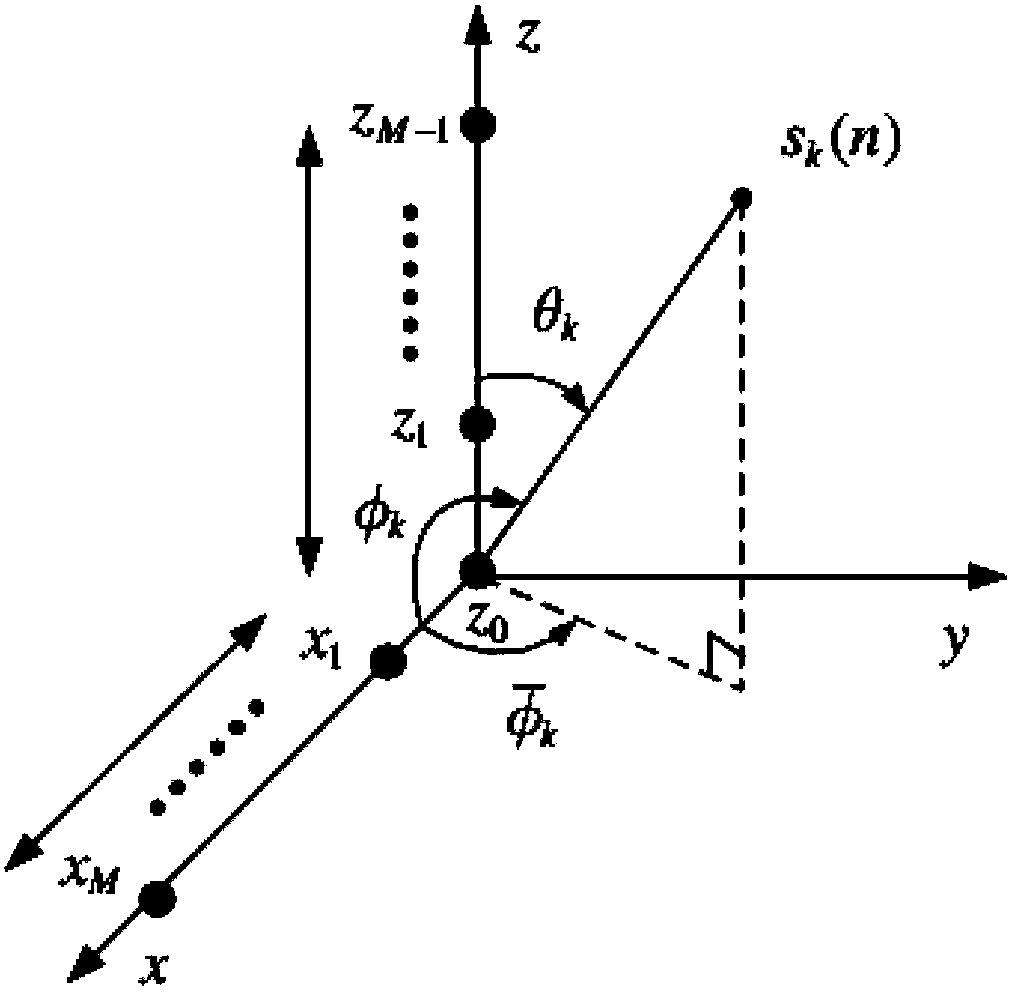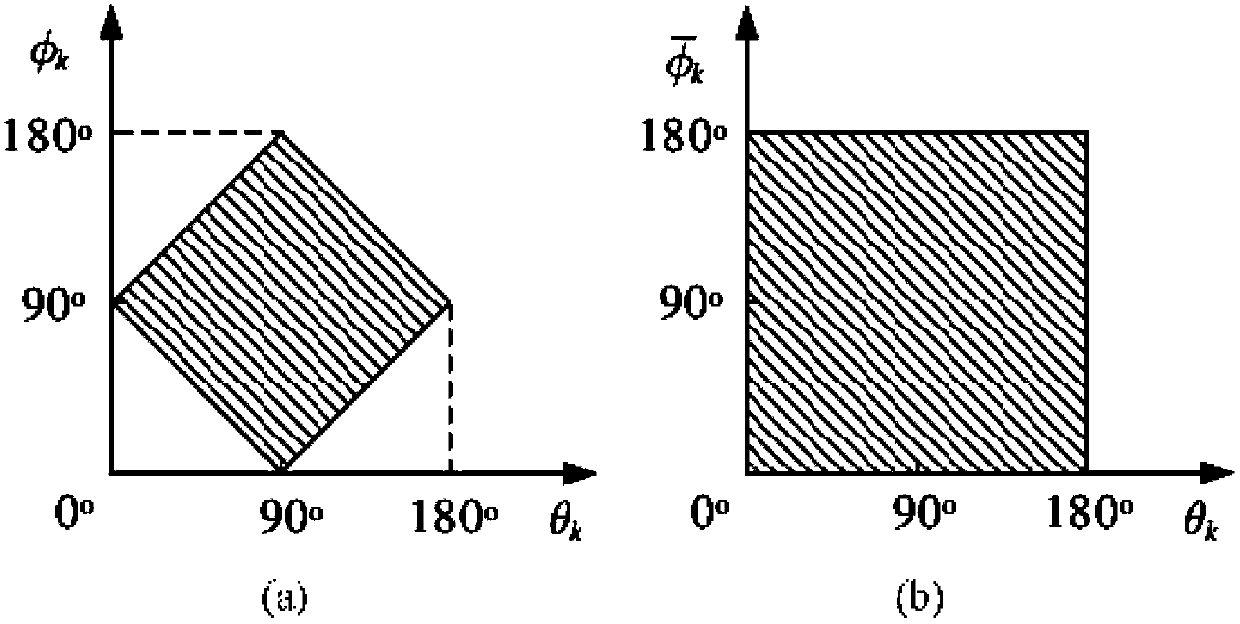Joint estimation method for azimuth angle and elevation angle of signal on basis of L-type sensor array
A sensor array and azimuth technology, applied in the field of signal processing, can solve the problems of high computational complexity of two-dimensional wave arrival, inability to apply real-time environment, and inability to provide pairing results, etc.
- Summary
- Abstract
- Description
- Claims
- Application Information
AI Technical Summary
Problems solved by technology
Method used
Image
Examples
Embodiment
[0067] Direction of Arrival estimation combining azimuth and elevation angles according to an embodiment of the present invention will be described in detail below.
[0068] Such as figure 1 As shown, the L-shaped sensor array is placed on the x-z plane and consists of two uniform linear arrays. Each uniform linear array contains M omnidirectional sensors with a spacing of d. At the origin of the coordinate system z 0 The sensor at is used as a reference for each uniform line array, z 0 and x 1 The sensor spacing is also d. Assume p incoherent far-field narrowband signals {s k (n)}, wavelength λ, from different elevation and azimuth angles {θ k ,φ k} incident on the array. Such as figure 1 As shown, the elevation angle θ k and azimuth φ k Measured clockwise relative to the z-axis or x-axis, azimuthal projection Measured counterclockwise with respect to the x-axis in the x-y plane. Here 0°≤θ k ≤180°, 0°≤φ k ≤180°, The signal received by two uniform linear arrays...
PUM
 Login to View More
Login to View More Abstract
Description
Claims
Application Information
 Login to View More
Login to View More - R&D
- Intellectual Property
- Life Sciences
- Materials
- Tech Scout
- Unparalleled Data Quality
- Higher Quality Content
- 60% Fewer Hallucinations
Browse by: Latest US Patents, China's latest patents, Technical Efficacy Thesaurus, Application Domain, Technology Topic, Popular Technical Reports.
© 2025 PatSnap. All rights reserved.Legal|Privacy policy|Modern Slavery Act Transparency Statement|Sitemap|About US| Contact US: help@patsnap.com



